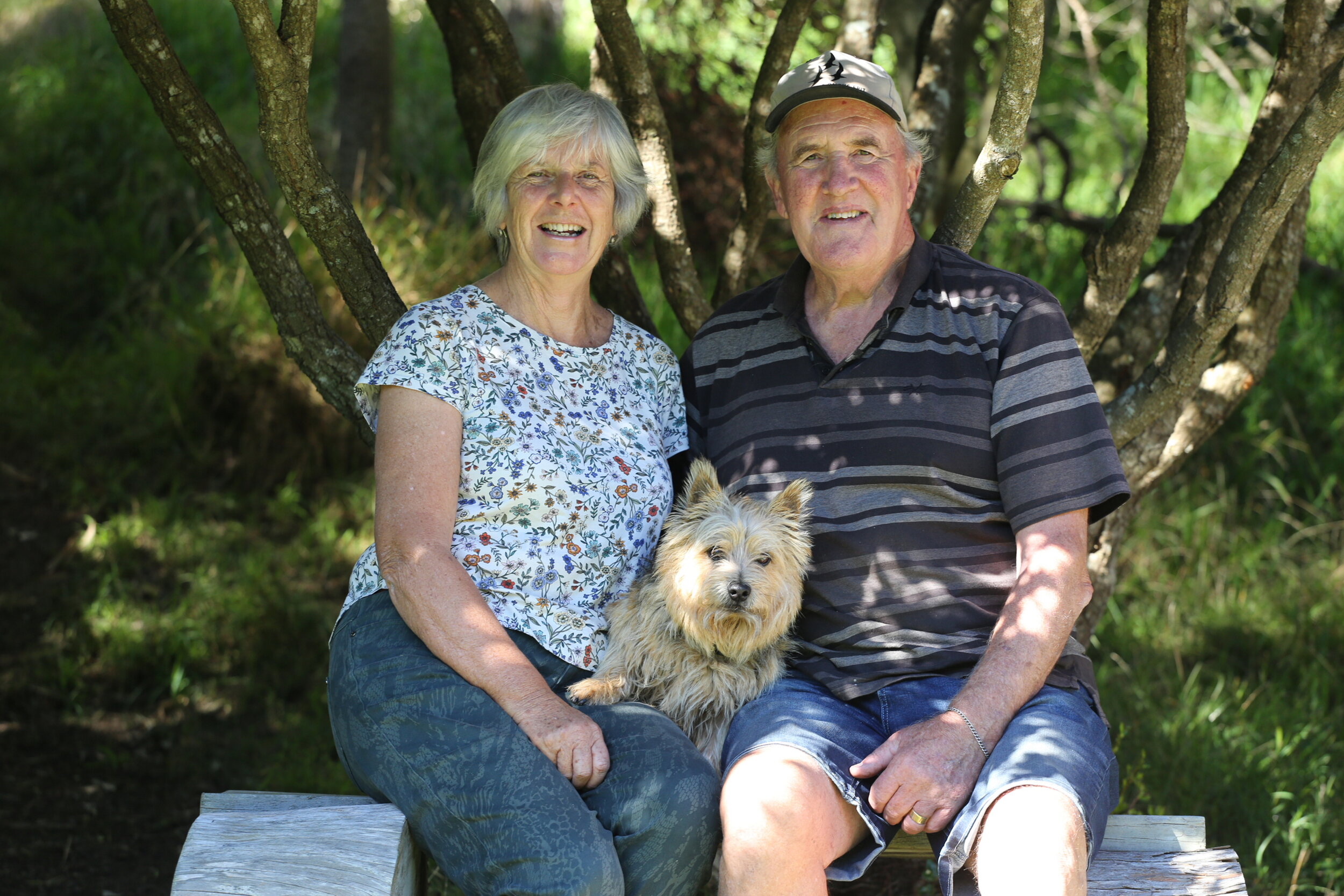denise and dougal mackenzie
As the southernmost part of Wairarapa Moana, it is easy to see why Ōnoke Spit might sometimes be forgotten.
The four-kilometre long narrow stretch is battered on all sides by the elements, and sometimes by human activity. If ever there was a part of the landscape that needed a helping hand, it is here, a fact recognised by locals Dougal and Denise MacKenzie when establishing ‘Friends of Ōnoke Spit’ in 2010.
Caspian terns, banded dotterels, katipo spiders, spotted skinks, even the occasional little blue penguin and Australasian gannett are found in this remote, harsh environment. Their survival here is now reliant on the efforts of people like Dougal and Denise.
So too is the case for existing flora such as sand tussock, sand daphne, raoulia and pingao. Nipping at their roots - and well established in parts - are aggressively growing pest plants.
“It is such a unique and historic part of Wairarapa that is under-threat… we just knew we had to do something about it,” Dougal says.
Friends of Ōnoke Spit was set up as an incorporated society, which is key for accessing funding, according to Denise.
Members are few, but with her strong education background, Denise enlisted Kahutara and Pirinoa Schools to help with some of the dirty work. Kahutara School pupils have been involved in annual working-bee days for the past eight years, weeding and mulching the plantings and putting new native plants in the ground.
Dougal and Denise run around 60 predator traps out on the spit to help protect the birds, catching stoats, rats, hedgehogs, ferrets and feral cats.
Some areas high on the beach have been fenced off in an attempt to discourage vehicles from drifting into the sensitive areas and destroying habitat and nesting sites.
This, along with support from the Department of Conservation and Greater Wellington Regional Council has resulted in tremendous success. However, all of their collective effort was nearly undone after a fire, thought to have started from an unattended campfire on the beach, ripped through an area of prized planting. Denise says it highlighted, once again, just how vulnerable the area is.
Having farmed in this far southwestern corner of the valley since the early 1980s, it is not lost on Dougal and Denise that, in a small way, their previous use of the land has contributed to Wairarapa Moana’s current troubles.
“The farm we came onto was basically one big wetland, and as part of the Lower Valley Development Scheme, it was developed into farmland which we were fortunate enough to draw through a ballot.
“So in that regard, we appreciate the opportunity to go farming, but in saying that it also contributed to the destruction of major wetlands. So what we are trying to do is give back a bit through our conservation efforts.”
Their efforts are not limited to Ōnoke Spit, with the now-retired farmers also championing neighbouring Pounui Lagoon, which they overlook from their property ‘Te Rakau’. In addition to clearing and re-setting the 60 traps out on the spit, there are a further 40 dotted in among the now thriving wetlands of Pounui Lagoon.
Te Rakau is a 14 hectare block on the edge of the bush-line that Dougal and Denise started developing in the mid ‘90s. Now 25-years on, it is teeming with birdlife, and led to the establishment of Te Rakau Birding, Wairarapa’s preeminent birding tour operator.
For more on Te Rakau Birding, visit their website.



